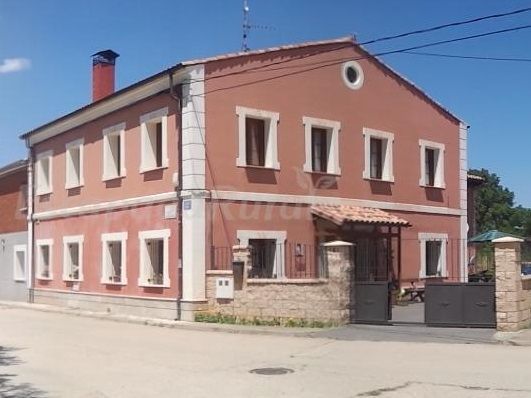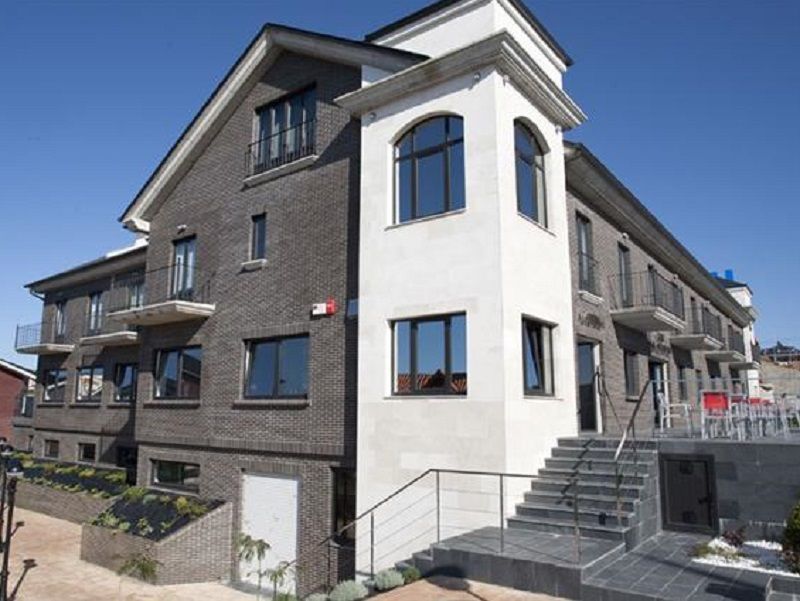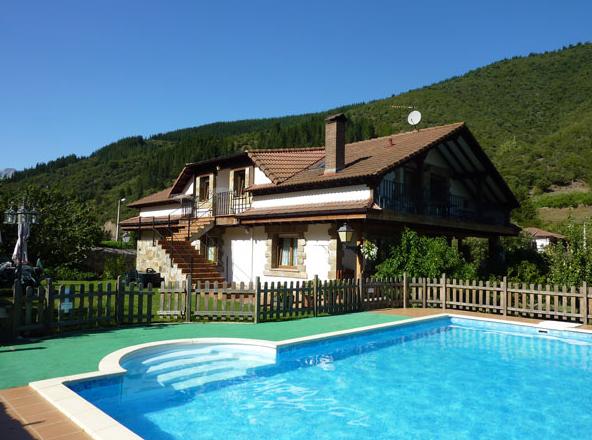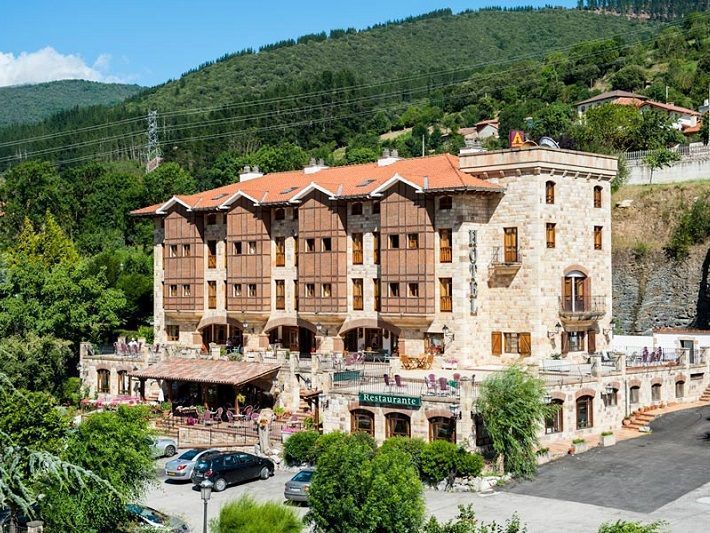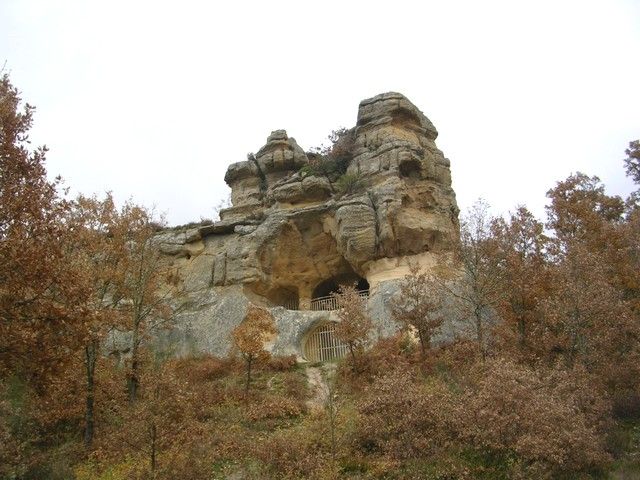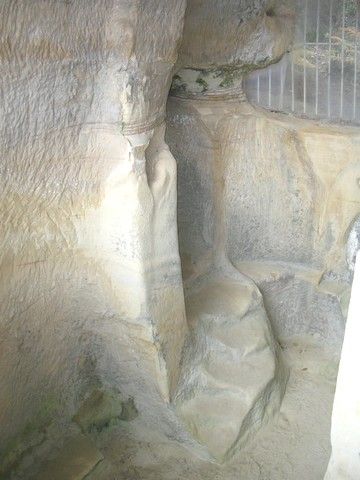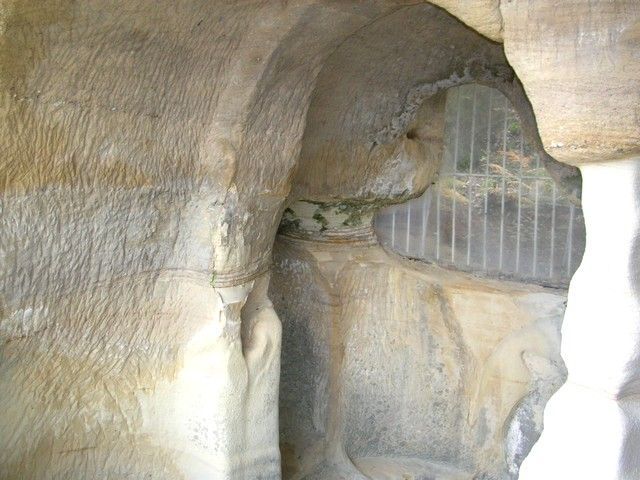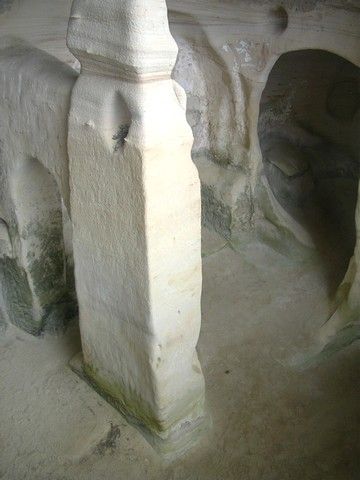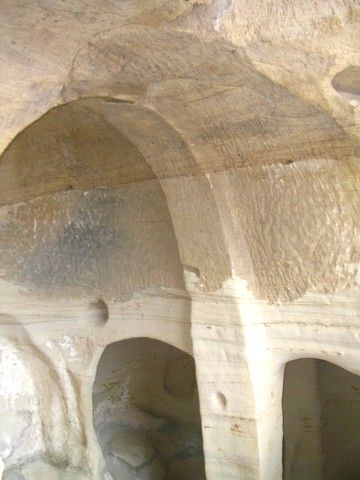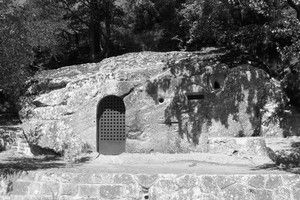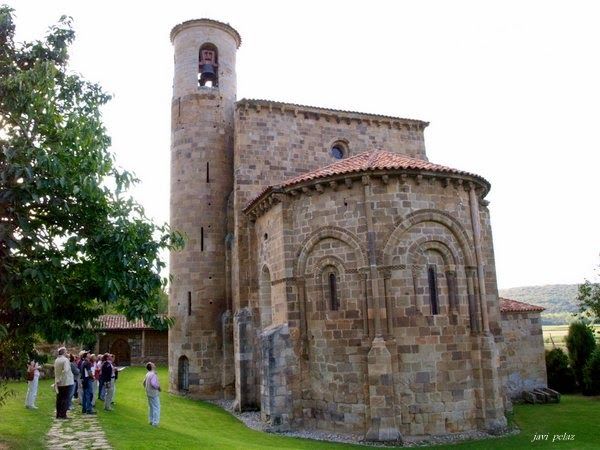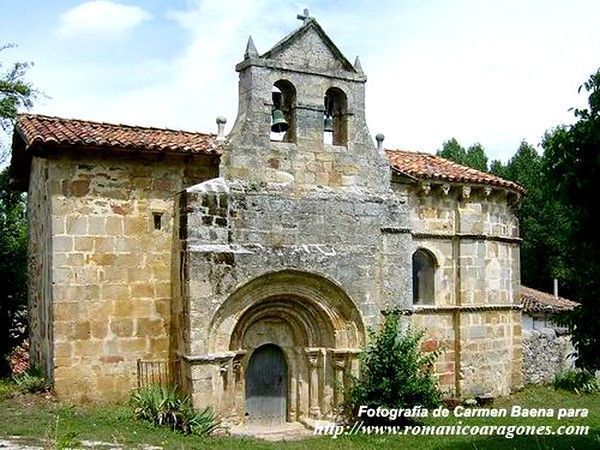SAN MIGUEL DE PRESILLAS
Thanks: To our friends Diego and Juan Antonio Alonso, lovers of Pre Romanesque Art, who have allowed us to know this hermitage and have furnished most part of the information and photographs contained in this file.
Previous notes
- Hermitage ensemble excavated on a rocky headland that overlooks the valley, formed by a church built at two levels, a cave baptistry and several artificial cells.
- Artificial cells have been found in the surroundings, as well as a cave baptistry .
Description
 Eremitic complex excavated in a rocky promontory that dominates the valley, formed by a church built in two levels, a cave baptistry and several artificial cells.
Eremitic complex excavated in a rocky promontory that dominates the valley, formed by a church built in two levels, a cave baptistry and several artificial cells. We are in front of on of the two hermitages in the region built in two levels; the other one being the Hermitage of Arroyuelos, located at a very short distance. The main floor has a basilical shape, with three very short naves and very high, with three apses, whereas in the upper floor there is a platform from which the whole church can be overlooked. The access of both is from the western side of the promontory, although at present the lower one is closed with a gate.
Today the access is through a modern staircase that climbs to the upper floor, a sort of a terrace over the valley, and that communicates through a ladder excavated on the rock, that goes down to the church but it is also closed with a gate. Pottery from the 8th to the 10th centuries has been found on the upper terrace.
From the platform we can see, at the background of
 the cave, three apses with an altar in each of them. The most clear one is the one in the central apse. The altar stone of the altar is rectangular in the left apse and square in the other two. In the three cases they are attached to the sidewall and the slanting to the sides. The officiant could have stayed on foot without walking on the altar stone or well on his knees, back to the attendees. The left and central apses are quadrangular, the right one is round shaped, maybe because it was not completely finished. In the other two, the sidewall has a blind arch insinuated that defines the space of the altar. In the left apse this arch has a double stroke suggesting an archivolt.
the cave, three apses with an altar in each of them. The most clear one is the one in the central apse. The altar stone of the altar is rectangular in the left apse and square in the other two. In the three cases they are attached to the sidewall and the slanting to the sides. The officiant could have stayed on foot without walking on the altar stone or well on his knees, back to the attendees. The left and central apses are quadrangular, the right one is round shaped, maybe because it was not completely finished. In the other two, the sidewall has a blind arch insinuated that defines the space of the altar. In the left apse this arch has a double stroke suggesting an archivolt.The general impression is that the nave to the right has its forms little defined. It differs clearly from the other two that keep a structural homogeneity. The two transverse arches that give way to the two apses, rest upon a prismatic pillar and they are canted. The communication between the apses is through a small linteled arch that projects itself over the mentioned pillar. The solution is a different one to access the right apse. An almost circular cavity has been opened, therefore it looks more like a cell
 or a warehouse rather than a holy space. Also the cover of the right nave is lower and the floor, higher.
or a warehouse rather than a holy space. Also the cover of the right nave is lower and the floor, higher.On the right pillar of the central arch there is a rest of the closing wall that could have been a corbel to separate the space of the faithful. There is a continuous bench in the nave to the left, after the ladder that climbs to the upper terrace. There is a door on the wall at its feet that at present is closed by a gate and a methacrylate screen. The dimensions of the church are not the ususal ones for the design of a masonry church; the naves are 3.5 m long by 7.5 m wide, what forces to think that the importance of the faithful was negligible in the rite, and the function of the parish church was testimonial, maybe because previously it had been a monastic church, and it never lost ist original function. The upper terrace could have served as a platform or maybe for the choir, as it is connected with the church by means of a small ladder.
Artificial cells have been found in the surroundings, as well as a cave baptistry called Old Cave, a rectangular compartment covered with a barrel vault and also excavated on the rock that has two baptismal fonts, one of them small. It could have formed with those rooms, and of course, with a hermitage with such complex structure, an important eremitic ensemble during the first years of the resettlement.
Other interesting information
Location: The hermitage is found in the village of Presillas, in the city council of Alfoz de Bricia, judicial district of Villarcayo, region of Las Merindades, province of Burgos. GPS coordinates: 42° 51' 19.7994"N 3° 52' 26.4"O.Access: Upon arriving to the village of Presillas, a purple panel informs the direction to take. The beginning of a road is reached that has to be followed around five minutes until reaching a closed wood where there is a wooden gate that opens to a path that takes us to the church through a vegetation
Share on:







